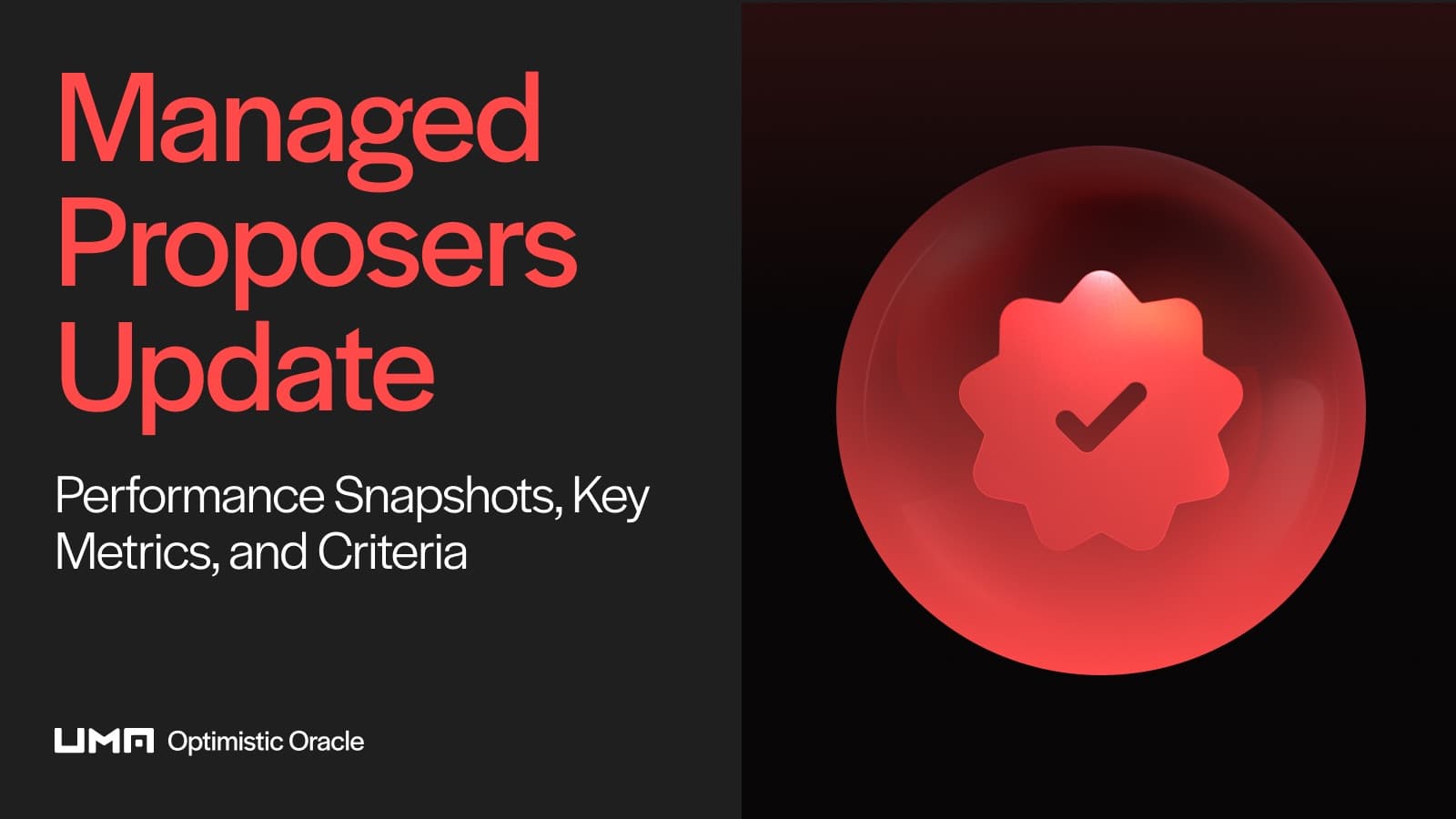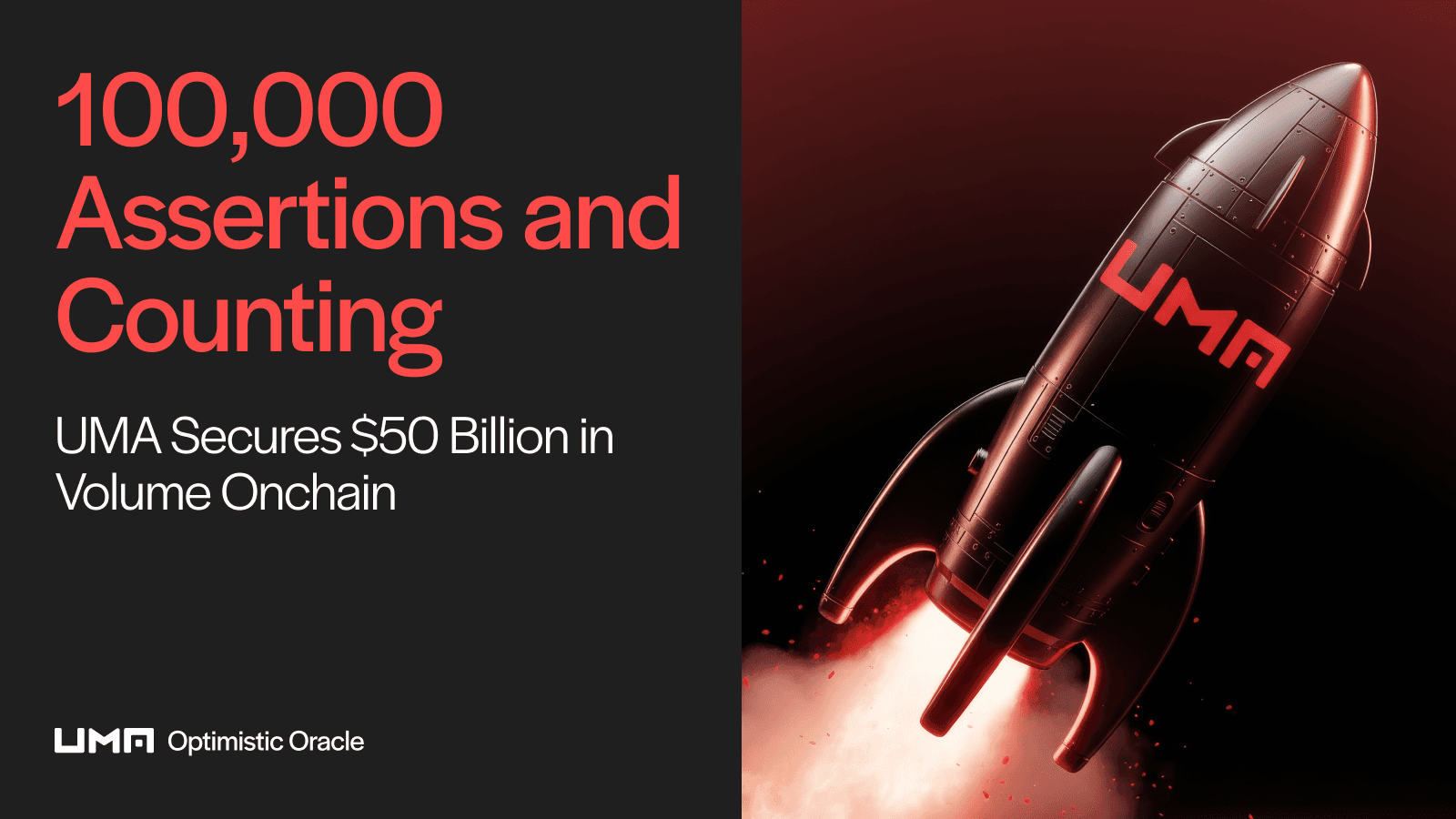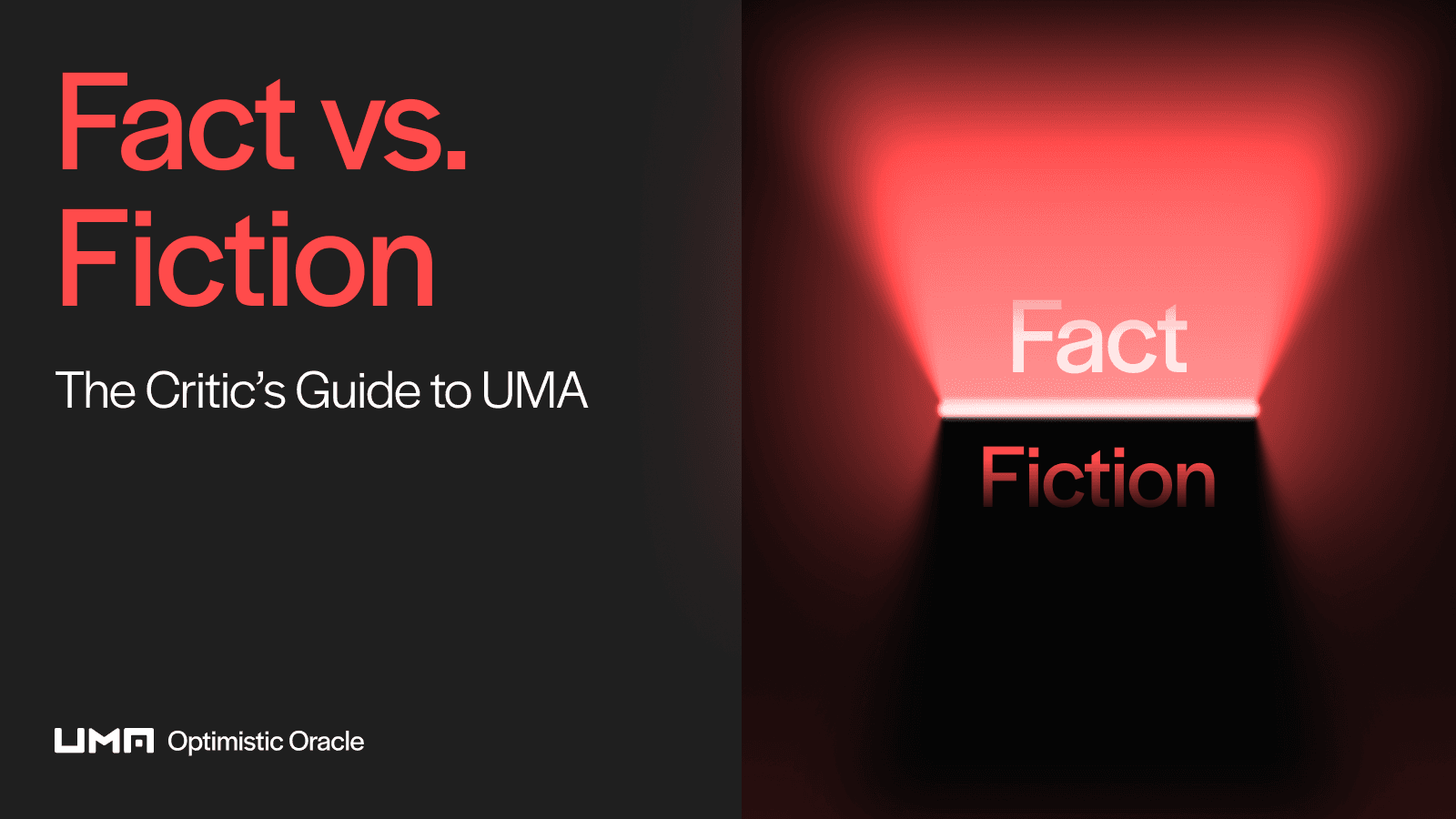Tldr; The Optimistic Oracle is live on Base. This move gives projects on the nascent network a flexible oracle system to build on. It also signals UMA’s growing presence in the Layer 2 ecosystem.
Key takeaways:
UMA’s Optimistic Oracle has expanded to Base.
The OO powers Web3 mainstays like Polymarket, Across, and Sherlock. It also secures oSnap, the Snapshot Execution Tool used by projects like Arbitrum and Gitcoin.
Base is one of the fastest-growing Layer 2 ecosystems and UMA’s deployment on the network is a boon for developers and users.
Base projects could use the OO to power prediction markets, decentralized insurance platforms, betting platforms, and many other applications.
The UMA team spends a lot of time tracking recent developments in the Web3 ecosystem. Over the past few years, that’s meant keeping up with Layer 2’s staggering growth. The earliest Layer 2s launched in 2021 and the ecosystem already holds over 12 million $ETH. Of all the Layer 2s to surge in recent years, Base’s development has been particularly hard to miss.
Today we announce UMA’s entry into the Base ecosystem as the Optimistic Oracle goes live on the network. Base is one of the leading solutions building towards a scalable future and UMA’s deployment will support the next generation of Base builders.
This update follows the OO’s launch on Ethereum and other chains like Arbitrum and Polygon. It’s a sign of UMA’s belief in the Layer 2 future, but just as importantly, it opens up new possibilities for all kinds of applications on Base. We explain more below.
What is the OO?
The OO serves data to smart contracts, allowing for any kind of verifiable truth to be trustlessly recorded onchain. Any statement can be asserted as true in the system and economic incentives ensure that most statements are accepted as true.
Due to the system’s game theoretical dynamics, dispute cases are rare. If a dispute gets raised within a challenge window, $UMA tokenholders vote to resolve the dispute. Proposers and disputers post a bond in the system, and $UMA voters are responsible for settling bonds. In return, they receive $UMA rewards for voting correctly.

As the OO is extremely flexible, it can verify all kinds of things about the world and publish the information onchain. Today the OO powers a wide variety of leading Web3 projects, including the popular prediction market Polymarket, the onchain protection platform Sherlock, and the intents-powered interoperability protocol Across. Additionally, the OO secures oSnap, an UMA-developed tool that lets DAOs govern themselves in a trustless manner. oSnap launched in 2023 and has been adopted by many of Web3’s foremost DAOs, including Arbitrum and Gitcoin.
The OO has proven itself as a useful offering for innovative Web3 applications, with over 10,000 assertions made to date. But the most disruptive use cases for the OO may not even exist yet.
Exploring Base
Base is a Layer 2 chain incubated by Coinbase. Built with Optimism’s OP Stack, it forms part of a group of emergent chains known as the Superchain ecosystem. Alongside projects like Mode and Zora, Base is working to scale Ethereum for mass adoption.
Layer 2’s growth has accelerated over the past year and Base has been one of the fastest risers. The Base ecosystem has quickly become a home for early DeFi blue chips, popular consumer crypto applications like Farcaster and Drakula, NFT artists, and more. What’s more, after Ethereum’s Dencun upgrade lowered Layer 2 transaction fees via EIP-4844, Base adoption has soared this month.

After launching the OO on Base, UMA can now power a host of applications on the network.
Build with the OO on Base
The scope for how Base builders could use the OO to power their applications is limitless. Below are some examples of possible use cases:
An onchain NFT options trading marketplace.
The financialization of NFTs, otherwise known as “NFTfi,” has rapidly gained pace since the 2021 boom. This trend is likely to continue as high-value digital art finds a wider audience. One example of a possible NFTfi use case is speculating on the future price of assets through options. If a trader thinks that CryptoPunks will hit a $500,000 floor price by the end of 2025, they could buy a call option for the right to buy one at an agreed strike price before the point of expiry. Conversely, if they’re already holding a Punk, they could hedge against possible downside by buying a put option for the right to sell their asset at a strike price at a later date. The OO could be used to verify transactions when the trader wants to exercise their option, triggering the NFT sale or settling disputes.
An onchain dating app.
The advent of apps like Tinder and Hinge has transformed the dating landscape over the last decade. More recently, projects like Unlonely have sought to bring “love onchain,” allowing people to bet on dating outcomes. As the onchain economy grows, it’s likely that we’ll see more dating-based experiments flourish like they did offchain. The OO could be useful for such apps, bringing real-world information onchain to cultivate a reputation system. Possible use cases include verifying a user’s submitted photos or NFT holdings, issuing users points for attending dates, or red strikes when they no-show or ghost their match.
A decentralized sports betting platform.
Sports betting is a multi-billion dollar industry but most sports betting happens offchain today. A decentralized platform could let traders permissionlessly propose events related to sports fixtures. For example, A Super Bowl fan may want to bet on the Chiefs scoring first, Taylor Swift appearing onscreen more than 10 times, or the songs Usher performs at half-time. The OO could verify the event outcomes and trigger payouts for the fan’s winning bets.
The OO could also power other applications such as prediction markets and decentralized cover platforms, similar to those it secures on mainnet today. Similarly, DAOs holding treasury funds on Base could use oSnap to maintain trustless governance.
Building the onchain future with UMA
UMA’s OO has found success in powering an array of different applications on mainnet. The expansion to Base illustrates UMA’s belief in Layer 2, setting the stage for many more builders to leverage the system for their applications.
Optimistic design patterns used by systems like UMA unlock huge potential for builders due to their flexibility. Similarly, Layer 2 ecosystems like Base offer massive scope to builders as they have ushered in an era of scalability and lower fees. The OO’s launch on Base offers builders flexibility and scalability, creating new opportunities for applications to thrive on the network. We look forward to seeing how Base builders use UMA to bring their ideas to life.
To learn more about Base, head to the project’s website. To find out how to integrate the OO into your project, visit our website.
Words by @dreamsofdefi



